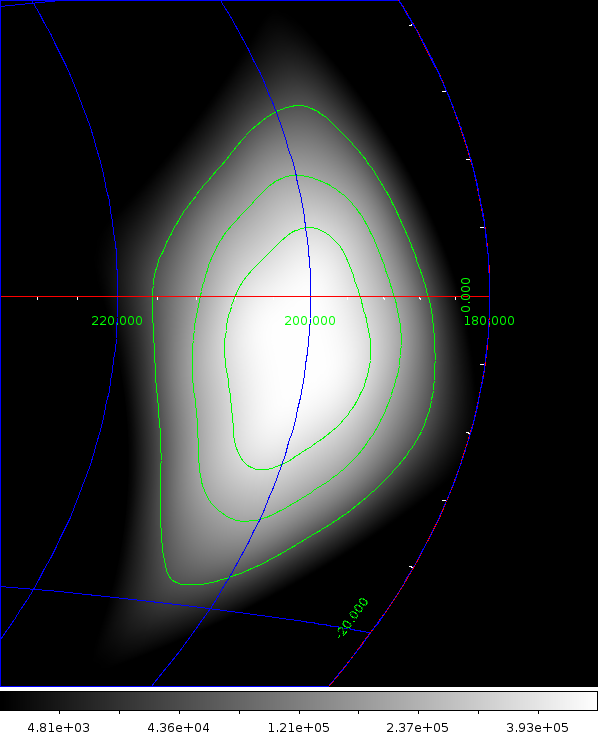Proposal Details - 1120019
Hard X-ray study of the ultra-compact X-ray binary 4U 0614+091 (Chenevez)
Proposal Abstract
It is proposed to continue the successful INTEGRAL monitoring of the ultra-compact X-ray binary and micro-quasar 4U0614+091 to study its emission properties in hard X-rays. 4U 0614+091 is an interesting target for several reasons: not only it harbours the closest active X-ray burster, it exhibits variations at very different time scales and over the whole electromagnetic spectrum, such as synchrotron jet emission, X-ray flaring states, and thermonuclear X-ray bursts. Moreover, the high-energy persistent emission from the source is characterised by a particularly hard (non thermal) X-ray tail. However, this low-mass X-ray binary is situated in a region of the sky well outside the Galactic bulge, and it has thus not being much observed by INTEGRAL so far. Therefore, one wants to exploit the INTEGRAL instrumentation to survey the dynamical behaviour of the source, and better describe its spectrum in hard X-rays. A first monitoring campaign is on-going during AO-10, and the first results seem already very promising. A renewed 500 ks monitoring in AO-11 will make it possible to follow the evolution of the long-term persistent emission variability, as well as to investigate the activity of shorter time-scale processes. In fact, 4U 0614+091 is also known for having exhibited usual short X-ray bursts, an hours-long superburst, and several intermediately-long bursts with superexpansion of the neutron stars photosphere. The proposed observing strategy will for instance allow to relate the bursting behaviour of the source to its broad-band emission, and especially to its flaring activity on time scales of days to weeks. The present proposal does also request joint XMM-Newton and INTEGRAL observations.
Observation Strategy (Recommended by TAC)
Total of 500 ks using a random hexagonal pattern, centered on RA, Dec (J12000.0 in degrees) = 94.280, 9.137 (l, b = 200.877, -3.364 degrees). The time will be split into one 200 ks observation and five 50.4 ks observations (4 hexagonal patterns each with exposure time of 1800 s per pointing). They will be approximately regularly distributed along the visibility periods in 2012 (February - April and August - October; i.e., one 200 ks observations and one 50.4 ks observation during the former period and four 50.4 ks observations during the latter period). Two of these observations will be accompanied by contemporaneous 10 ks XMM-Newton observations (i.e., a total of 20 ks approved XMM-Newton time). so as to correctly get the continuum to high energies, plus one 50 ks exposure (4 HEX) later during the first visibility period of the source (21 February - 23 April), as well as five other 50 ks exposures approximately regularly distributed along the 2nd visibility period (25 August - 26 October).
Proposal grade: C
Data Rights (Recommended by TAC)
Data rights were granted for 4U 0614+091.
Exposure Map
The exposure maps are in galactic coordinates using the Aitoff projection and units of seconds, and the colour scale is indicated at the bottom. The green lines provide the 100, 300 and 500 ksec contour.
